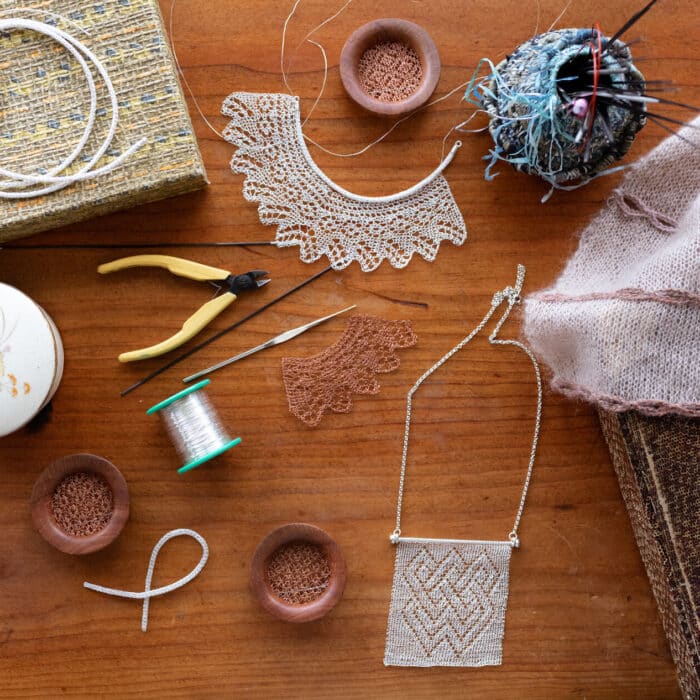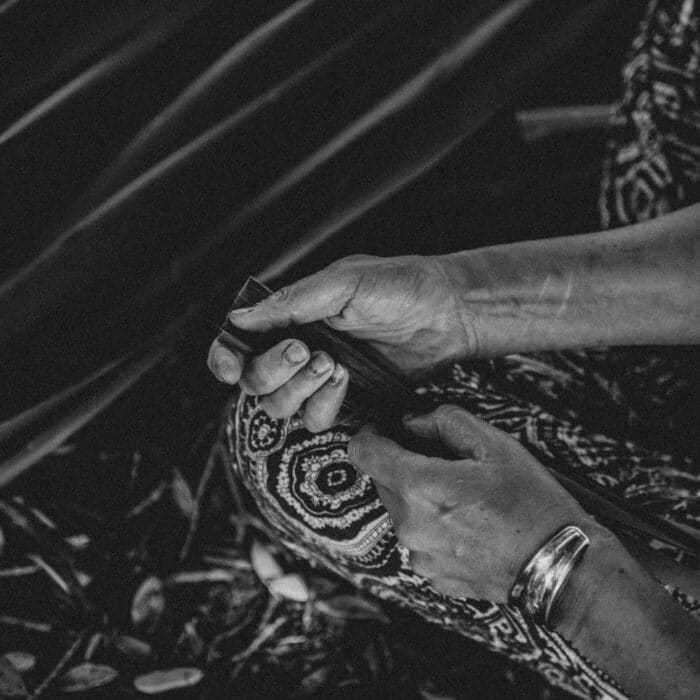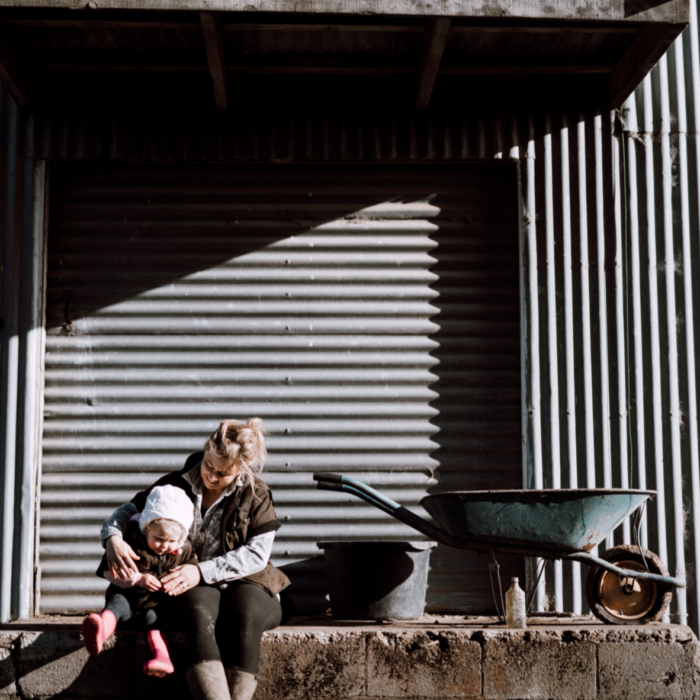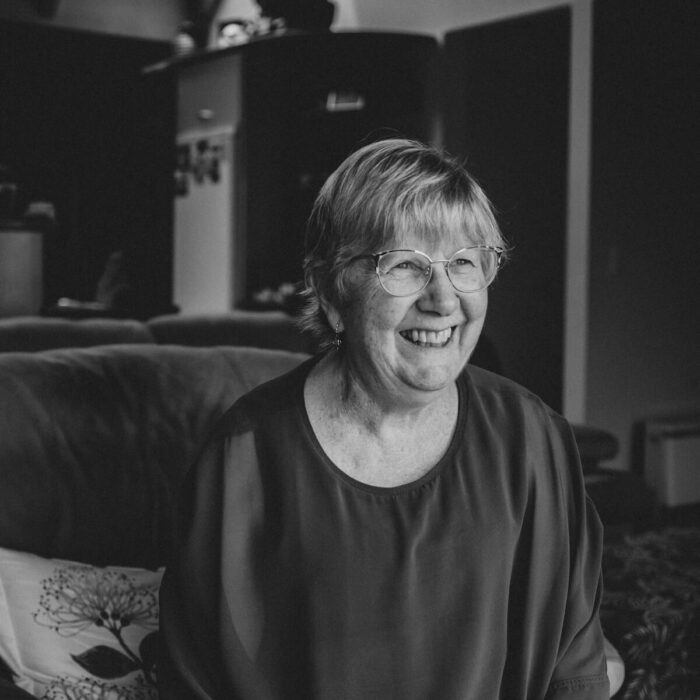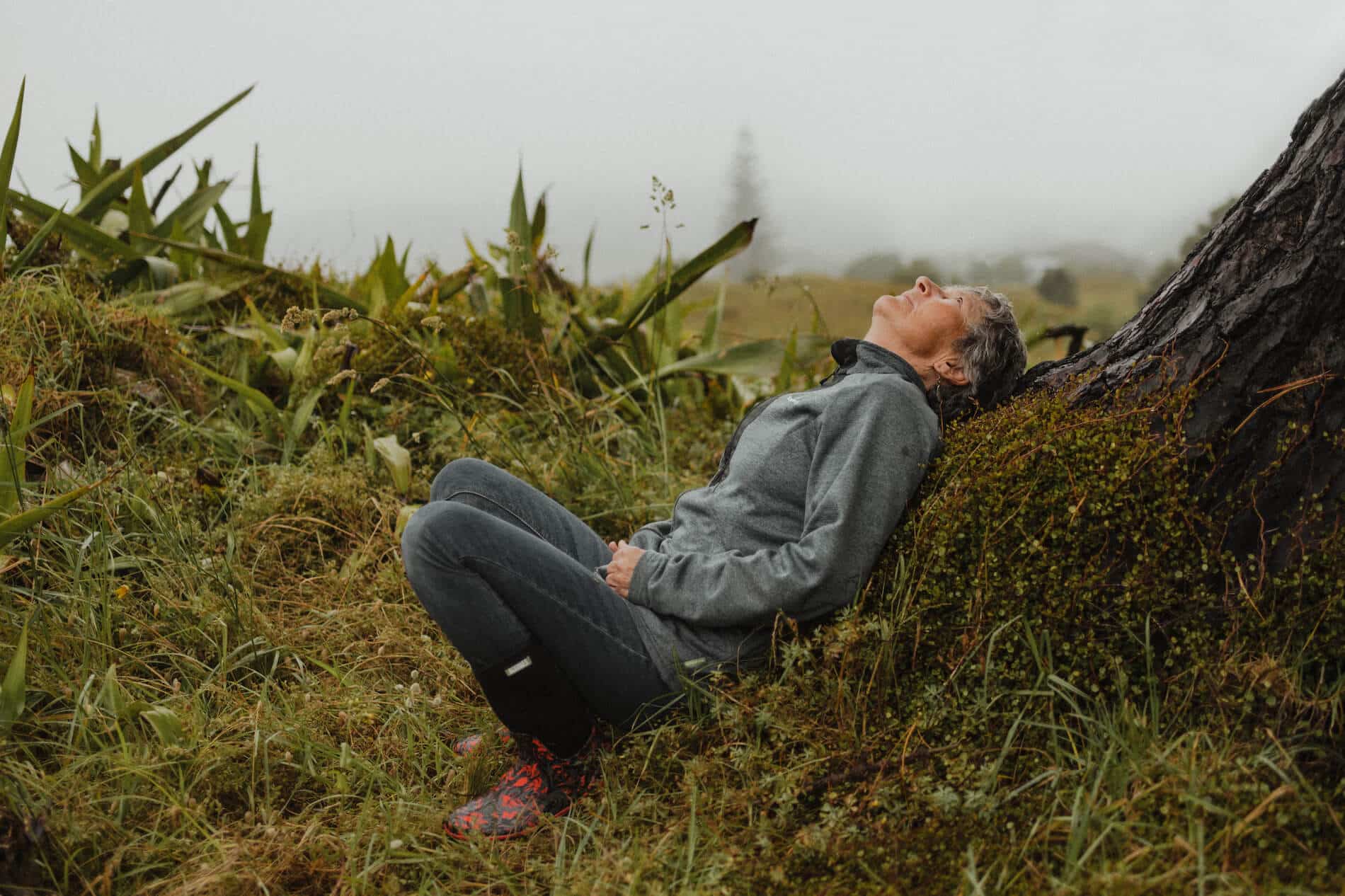
I was a teacher of special needs kids, then I got into healing modalities – the flower essences were my link into healing with nature. I know there’s healing to be found in plants – not just the physical but at a very deep spiritual level, so when I found out about shinrin-yoku it just seemed like all the dots had joined. Everything I’d ever done in my life before, everything I’d been through, had led me to that moment of, “This is what I need for my healing.” But it’s not just me. We’ve all become so disconnected over generations of city living and busyness and the tech boom.
I found my home on Great Barrier and I came and lived here. But I had a very messy marriage break-up, which meant having to go back to Auckland. I was desolate. I grieved for this place every day, but I found solace in the piece of beautiful bush at the bottom of my road, and that’s where I did all my processing. And then I finally found my way back here.
Shinrin-yoku was born out of the tech boom in Japan in the mid-1980s. It’s relatively modern but the Japanese have always had a spiritual connection to the forests. Because people were sick or dying from stress-related diseases, they invested in researching the benefits of being in nature. They discovered that trees and plants give off chemicals called phytoncides as part of their immune system. When we breathe those in it stimulates our own immune system to produce natural killer-cells that fight off disease and cancer, and reduce cortisol and stress hormones in the blood. It settles down the heart rate and increases something called heart rate variability – which is what we need to have a healthy heart – and reduces blood pressure.
I was the first person in the Southern Hemisphere to train in this work. I heard about it from a Māori elder and the moment he started talking about it everything lit up, like, yes! This is something that’s speaking to the core of my heart – I have to do it. But training was in the States. I had no money, I had a kid at home, but in the end I thought, “Bugger it. I’m going to mortgage my house and I’m going to go.” It was just the second guide training that had ever been run, and I was the first person outside of Japan and the US to train as a guide.
When I got back to New Zealand in May 2015, it was pretty hard because no one had ever heard of it. Kiwis were saying, “We go hiking, we go fishing, we go surfing. We know about nature, we don’t need this.” Or, “This sounds like mindfulness,” but actually it’s quite different. It was hard to get the word out there, but there’s much more awareness of it now. There’s been a lot of research done on attention span and on focusing, and they reckon that just being out in nature you have this ‘soft focus’ that allows your whole body, your brain and your nervous system to reset and restore itself. It’s about embodiment, so rather than calling it a mindful practice, it’s an embodied practice. My job as a guide is to open sensory doorways to nature that bring us back into our bodies. I start my walks by offering a guided meditation that opens each of the senses, focusing on what is happening around us. This helps us to become more fully present in our bodies as we begin to slow down and experience more – both within and without us – rather than being stuck in our headspace, which is always either looking forwards or thinking back.
I took ‘forest bathing’ out of the forest and onto the beaches. That’s why I call it ‘nature bathing’. It’s different doing it in the forests – it’s more of an internal process that people go through; it’s often reflective of their own internal processes and there’s this sense of being contained. When you do it out there [on the beach] – it’s expansive. It brings another whole dimension into the experience. It’s different, but both are needed, and we resonate with both.
There’s so many benefits. When you’re walking by the sea, your brainwave automatically gets lulled into this theta state of deep relaxation. It’s got this very calming effect. And breathing in the ozone and the negative ions from being by the water is also incredibly beneficial, which is why they used to have sanatoriums by lakes and oceans. We crawled out of the ocean – that was our birthplace. All life on the planet came from there, and there’s part of us that recognises that. And it’s not just the physiological benefits, there’s all the other psychological, spiritual and mental benefits that come with that, too.
One thing I get people to do is find themselves what’s called a ‘sit-spot’, a place where you just sit and relax for twenty minutes a day on a regular basis, and that’s your practice for the day. You do nothing. You just sit, and you rest. But what happens is you start to build a relationship with the log that you’re sitting on, with the grasses that are growing around you, with the sky and the birds that are flying around.
Through this work I’ve found my tribe – and they’re all over the world. It’s totally restored my faith in humanity. There’s nothing more on this planet I could possibly want to do with my life than support someone going through this beautiful process of deep connection. It heals their relationship with themselves, it heals their relationships with their friends and family, and it heals their relationship with the planet – and that’s what it’s all about. It’s about restoring our sense of who we are, and giving back to the planet, protecting the planet because...we’ve fallen back in love with it.

This story is part of THREAD, a year-long project by Shepherdess made possible thanks to the Public Interest Journalism Fund through NZ On Air.
Related Stories
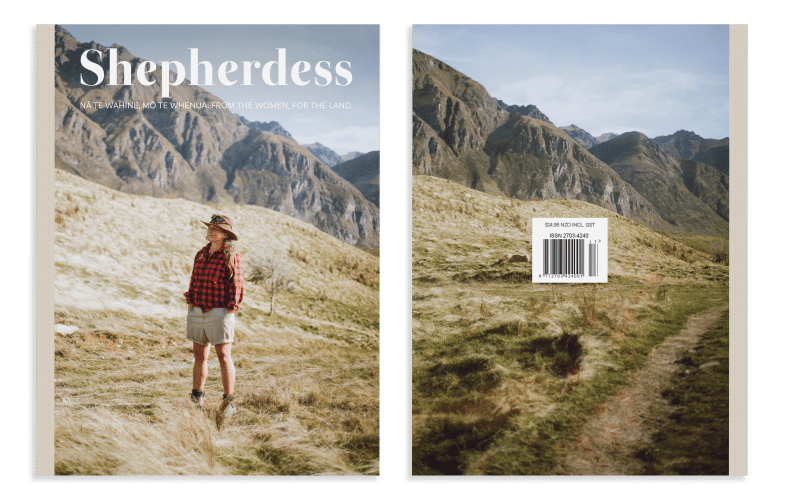
Out Now
Seventeenth Edition
Our beautiful Ngahuru Autumn 2024 Edition is out now!
